|
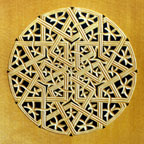 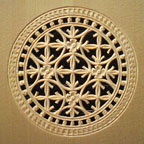
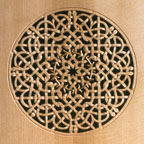 |

|
|
One of the most appealing features of historical lutes is the great
variety of resonant materials used. The Fugger inventory of 1580
lists lutes of ivory, Indian cane, ebony, cypress, brazil wood,
yellow and red maple, sandalwood, yew, whalebone and guaiac wood.
This list can be easily be lengthened, with rosewood, snakewood,
plum, birdseye maple, figured ash and others. I use a number of
these still, but my staples are figured maple and yew, both
producing instruments with slightly different warmth of tone. Harder
woods, ebony and rosewoods for instance, are used where a
particularly penetrating sound is wanted. Soundboards of lutes were
always of spruce or pine, of a stiff and close grained character,
enabling them to be very thin, and my own soundboards are similar.

Fillets of contrasting materials were frequently used between
lute ribs, and one very characteristic back material, yew, was often
used for narrow ribbed backs, with its lighter sapwood, the outer
part of the tree, as a decorative contrast to the darker heartwood.
This style occurs towards the end of the 16C, quite possibly because
the demise of the longbow around this time meant that yew became
more easily available –
a nice example of swords being turned into ploughshares. Yew was
used also for wide ribbed lutes, and I use it for both of these
styles.
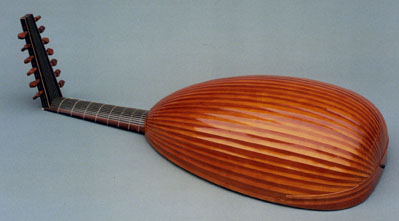
Figured maple, both flamed and the harder birdseye, make
excellent lute backs, for anything from 9 to 17 ribbed lutes. For
higher numbers if ribs, I prefer yew. One can also use alternating
rib materials to spectacular effect.
I tend to use the more graphic linear styles of decoration for
renaissance lutes, with contrasting lines of bone, ebony and
snakewood, say, or panels of contrasting woods, rather than
marquetry –
perhaps a consequence of my architectural training. But I do like to
have fun with baroque lutes, using my own designs of fretted and
carved panels in plum or pearwood, occasionally with gilded details,
to decorate pegboxes. I like to leave fingerboards plain, as the
strings interfere with any linear decoration.
Long necked lutes –
archlutes and chitarroni –
offer much scope for decoration, and I use appropriate schemes of
stripes, lines and panels of contrasting woods.
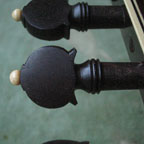
Pegs are plainly very important to the luteplayer, and I take
great care to make sure they function smoothly. There are many
designs of peghead, and a number of suitable materials, although I
use mainly hard plum or rosewood, both sometimes stained black, and
occasionally boxwood.
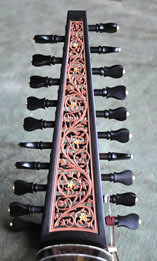 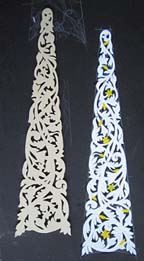
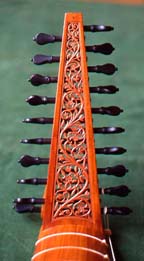
The soundhole of the lute, the rose, is a beautiful feature of
the instrument, and I make sure this is really finely made in an
appropriate style, even on quite modest instruments. These were
sometimes gilded on old instruments, and I like to occasionally use
touches of gilding on details.
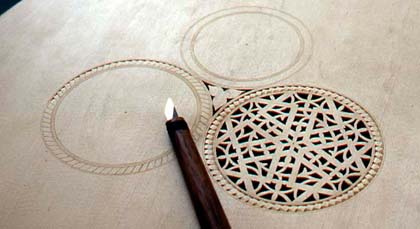
I use richly coloured varnishes on my instruments, usually now my
workshop made varnishes coloured with my own lake pigments. These
are mostly a warm red-brown on pale woods and a little lighter on
yew. I have also used a rich golden-yellow on some 6c lutes,
following the style of that lovely instrument in Holbein’s
Ambassadors portrait.
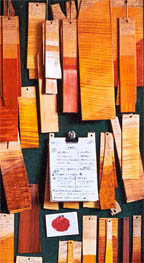
All these matters are of course discussed with customers in
detail on ordering.
|
|
|